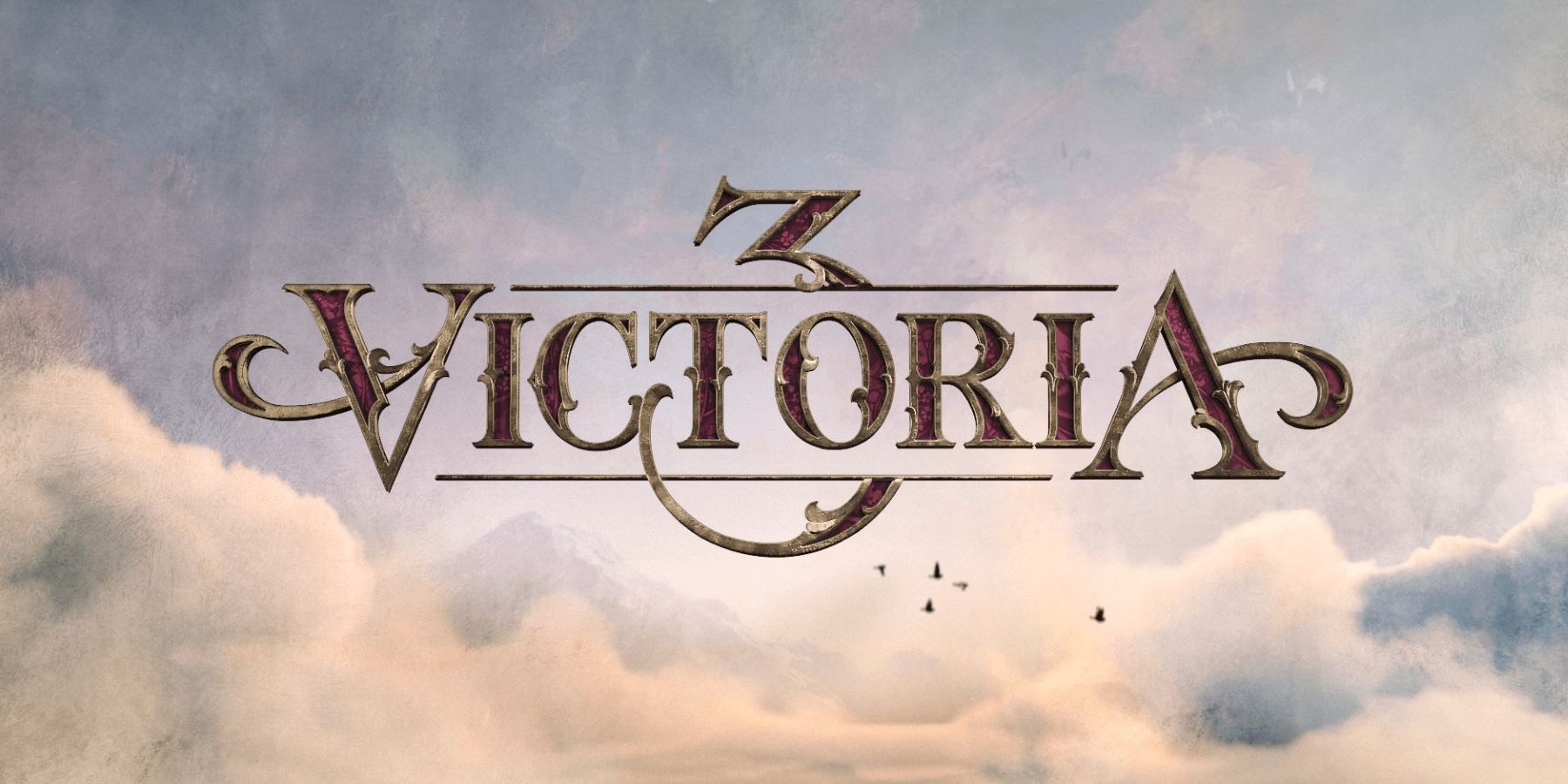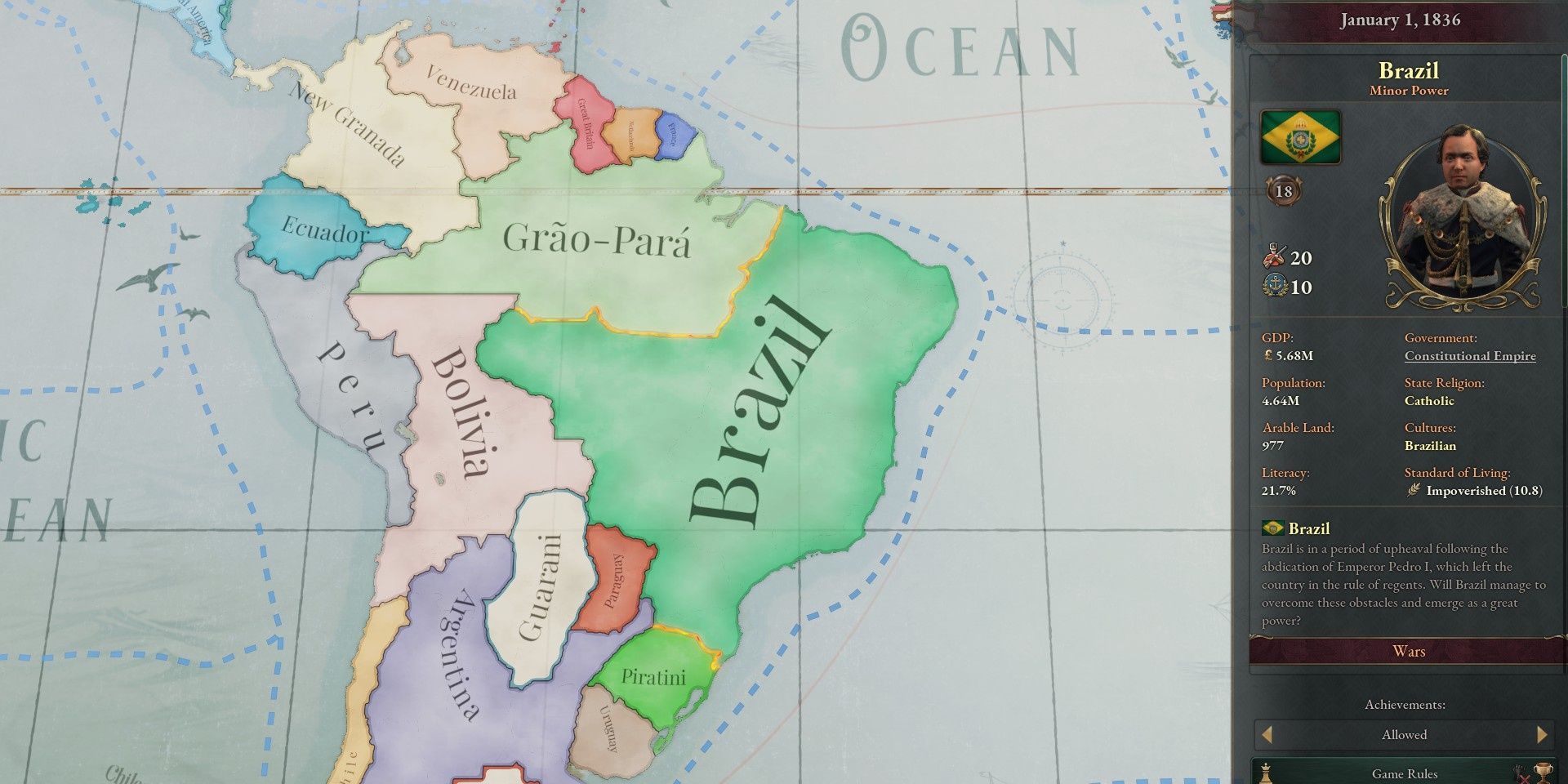Victoria 3 puts the fate of civilizations in the hands of players. Whether it be the imperial powerhouse of the British empire, the isolated Japanese Shogunate, or the ambitious United States, players will certainly have their empire-management skills put to the test regardless of which nation they choose. With over 100 countries in the game, there are endless ways to transform the world stage.
With such a massive scale, then, Victoria 3 is understandably a complicated strategic sandbox that forces players to make decisions that can often feel overly-complex or downright counterintuitive. Although Victoria 3 lets players set specific victory conditions, like economic dominance, hegemony, or egalitarian society, it ultimately encourages them to shape their ideal society howsoever they see fit. As such, no single civilization type is going to be better than the other, but each one definitely comes with its own set of advantages and disadvantages that make the various paths to success uniquely challenging.
Victoria 3's Great Powers and Major Powers
Great Powers in Victoria 3 are the most powerful and glorious nations that have an expansive global reach. It should come as no surprise then that Great Britain comes out on top in a game set at the dawn of the Victorian Era. While the sheer size of the British Empire can intimidate players upon opening the map, it can serve as a great example of one of Victoria 3’s key strategic mechanics: the subject system. Although the empire is vast, players actually only control the British Isles. Subordinate governments control the overseas territories and crown colonies. Where this becomes complicated, however, is the market. Since the economy of Great Britain expands to nearly all corners of the map, its economy can be difficult to manage.
The United States is a slightly less intimidating Great Power that players might want to consider if they want the challenge of a powerful nation but also need some time to master the complexities of Victoria 3. The USA maintains a policy of isolationism from European affairs, but dominates North America. The young country has a lot of growing pains it needs to overcome and offers tumultuous internal politics that will make for an exciting playthrough. Whichever Great Power players may choose, they’ll certainly have their fair share of expectations to meet right off the bat.
Just below Great Powers are the Major Powers. These nations are still powerful and prestigious, but at a more regional scale. The Kingdom of The Two Sicilies in Victoria 3 is a great beginner-friendly Major Power in Victoria 3 for players to choose in order to get comfortable with the intricate economic system in the game. The fractured Italian states also present a great way for players to master the finer details of expansion, whether that be through building different types of alliances or outright conquest. Major Powers are some of the best countries for new players to look at, and even returning fans of the franchise could benefit from a lighter introduction into Victoria 3’s advanced AI.
Victoria 3's Best Minor and Unrecognized Powers
Minor Powers may not initially be an attractive choice for players, but they offer unique challenges that will help build players’ skills in the game. Minor Powers, like Mexico or Sweden, will give players a degree of influence over regional affairs, but likely won’t have the same pressures that a Major Power would have. This position on the world stage also puts heavier emphasis on Victoria 3's Population Demands, which represent the populations of the nation and drive the economy, policy changes, wars, or rebellion.
Brazil, for example, gives players a chance to more carefully explore Victoria 3’s mechanics, particularly its warfare system. Its unique position in South America also presents a great opportunity to focus on balancing the government to increase standard of living or eventually expand colonial interests across the continent. Minor Powers are often a surprisingly safe option to choose, though the path to prestige will undoubtedly require thoughtful strategy.
The Unrecognized Powers in Victoria 3 are nations that the reigning powers do not see as an equal and who gain recognition by building prestige. The Japanese Shogunate is an Unrecognized Major Power at the start of the game. The geographic isolation and autocratic control presents a great opportunity for players to take the island nation in multiple directions. Though the Japanese Shogunate is behind on naval power, it has a unique government with a lot of authority that makes the path towards militarization fairly easy. Additionally, Russia and Great Qing present opportunities to ally with a Great Power and an Unrecognized Major Power, respectively, and there is plenty of room to the south to declare colonial interest in.
Like the Japanese Shogunate, other Unrecognized Powers such as Persia, the Sikh Empire, and Great Qing offer players a unique and challenging opportunity to flex their creativity and truly test their mastery of the game. No matter which path players choose to start with in Victoria 3's journey through history, the opportunities to build unique societies and respond to complex challenges in an advanced simulator are practically endless. Though the point of Victoria 3 is for nations to transform and adapt according to their own specific combinations of economic, political, and geographic needs, the journey players can bring their civilizations down will be memorable each step of the way.
Victoria 3 is currently available on PC.



